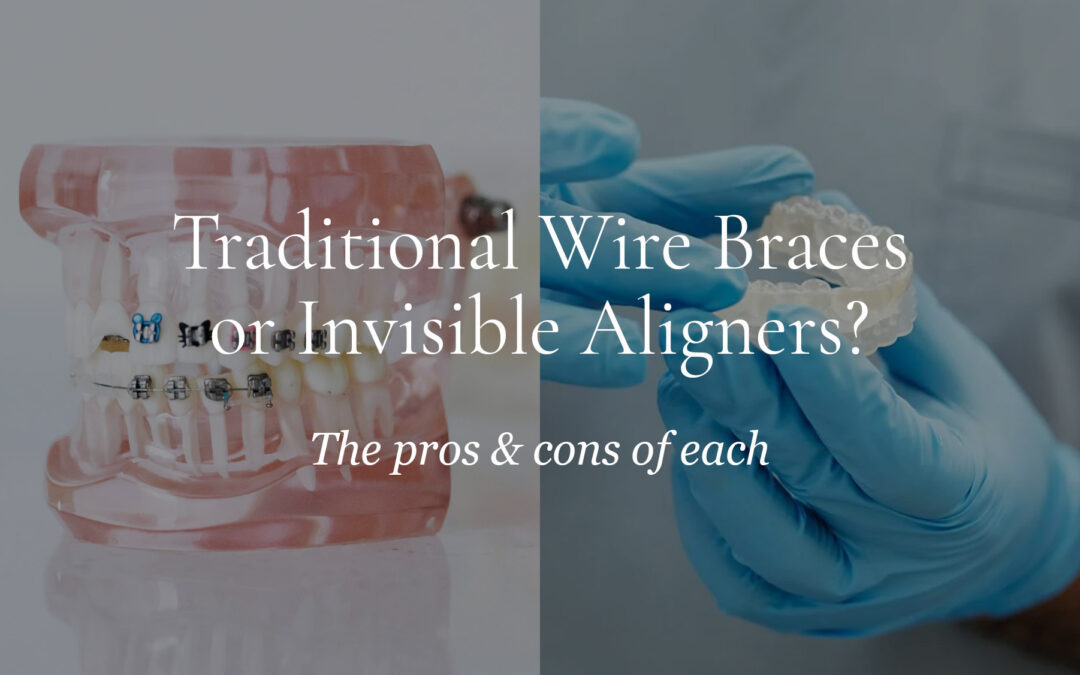When it comes to orthodontic treatments, two of the most popular options are traditional wire braces and invisible aligners. At CDI Ohio, patients often face the decision of choosing between these two methods to achieve a perfect smile. Both options have their distinct advantages and some potential drawbacks, so it’s essential to understand the differences before talking to your orthodontist.
This article will explore the pros and cons of traditional wire braces and invisible aligners, helping patients at CDI Ohio make an informed decision about their orthodontic care.
Traditional Wire Braces: A Time-Tested Solution
Pros of Traditional Wire Braces
- Effectiveness: Traditional wire braces are known for their ability to correct a wide range of dental issues, including severe misalignments, overcrowding, and bite problems. The system of metal brackets and wires allows for precise adjustments, making them highly effective for complex cases.
- Durability: Wire braces are made of metal, which makes them extremely durable. They are less likely to break or crack under normal wear and tear, providing a reliable solution throughout the treatment period.
- No Need for Patient Compliance: Unlike invisible aligners, traditional braces are fixed to the teeth, which means the patient cannot remove them. This eliminates the need for patient compliance, as there is no risk of forgetting to wear them or losing them.
- Continuous Treatment: Because traditional braces are worn 24/7, they provide continuous pressure on the teeth, leading to steady progress. This can result in a faster treatment time for certain cases, especially those requiring significant movement.
- Customization Options: Modern wire braces offer some degree of customization. Patients can choose from different colored bands for a more personalized look, making the experience more enjoyable, especially for younger patients.
Cons of Traditional Wire Braces
- Aesthetic Concerns: One of the most significant drawbacks of traditional wire braces is their appearance. The metal brackets and wires are visible, which can be a source of self-consciousness for many patients, particularly adults.
- Discomfort and Pain: Wire braces can cause discomfort, especially after adjustments. The brackets and wires can also irritate the inside of the mouth, leading to sores and discomfort. Additionally, the pressure applied to the teeth during adjustments can cause soreness for a few days.
- Dietary Restrictions: Patients with traditional braces need to avoid certain foods that can damage the brackets or get stuck in the wires. Sticky, hard, and chewy foods are typically off-limits, which can be an inconvenience for some.
- Maintenance and Oral Hygiene: Cleaning teeth with traditional braces can be challenging. Patients need to be diligent with their oral hygiene routine, using special tools like interdental brushes and floss threaders to clean around the brackets and wires. Failure to maintain proper oral hygiene can lead to plaque buildup and tooth decay.
- Regular Orthodontic Visits: Traditional braces require regular visits to the orthodontist for adjustments, which can be time-consuming and inconvenient for busy individuals.
Invisible Aligners: A Modern Alternative
Pros of Invisible Aligners
- Aesthetics: The primary advantage of invisible aligners is their discreet appearance. Made from clear plastic, these aligners are nearly invisible when worn, making them an attractive option for those concerned about the aesthetics of orthodontic treatment.
- Comfort: Invisible aligners are custom-made to fit snugly over the teeth, without the sharp edges and protruding wires associated with traditional braces. This often results in less discomfort and irritation in the mouth.
- Removability: One of the most appealing features of invisible aligners is that they can be removed. This allows patients to eat and drink without restrictions and makes it easier to maintain good oral hygiene, as the aligners can be taken out for brushing and flossing.
- Fewer Office Visits: Invisible aligner treatments typically require fewer office visits than traditional braces. Aligners are usually provided in sets, with patients instructed to switch to a new set every two weeks. This can be a significant convenience for those with busy schedules.
- No Dietary Restrictions: Because aligners are removable, patients can eat whatever they like without worrying about damaging their orthodontic appliances. This freedom is a significant advantage for many.
Cons of Invisible Aligners
- Limited Effectiveness: While invisible aligners are effective for many cases, they may not be suitable for complex orthodontic issues, such as severe misalignments or significant bite problems. In such cases, traditional braces may be the only viable option.
- Patient Compliance: The success of invisible aligners heavily depends on patient compliance. Aligners must be worn for 20 to 22 hours per day to be effective. Forgetting to wear them or removing them too often can lead to delayed progress or even treatment failure.
- Cost: Invisible aligners can be more expensive than traditional braces, depending on the complexity of the case and the specific aligner brand used. This cost difference can be a deciding factor for some patients.
- Risk of Losing Aligners: Since aligners are removable, there is always a risk of losing them, which can disrupt treatment and incur additional costs for replacements.
- Maintenance: Aligners need to be cleaned regularly to prevent bacteria buildup and maintain their clarity. Patients must also remember to brush their teeth after every meal before reinserting the aligners, which can be inconvenient.

Traditional Braces vs. Invisible Aligners? Find the Right Option at CDI Ohio
Both traditional wire braces and invisible aligners offer unique benefits and drawbacks. The choice between the two depends on various factors, including the complexity of the dental issues, lifestyle preferences, and budget.
At CDI Ohio, patients can consult with experienced orthodontists to determine the most suitable treatment option for their specific needs. By weighing the pros and cons of each method, patients can make an informed decision that leads to a healthier, more confident smile.

